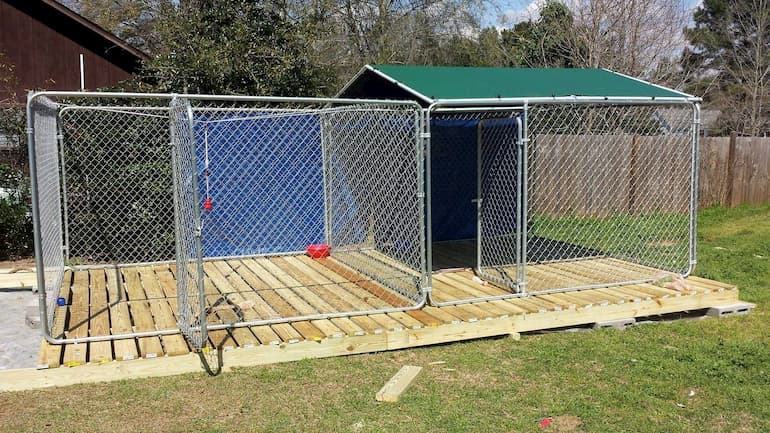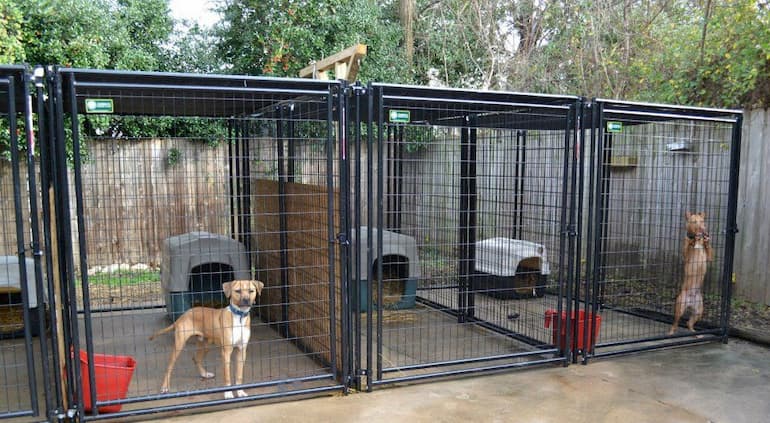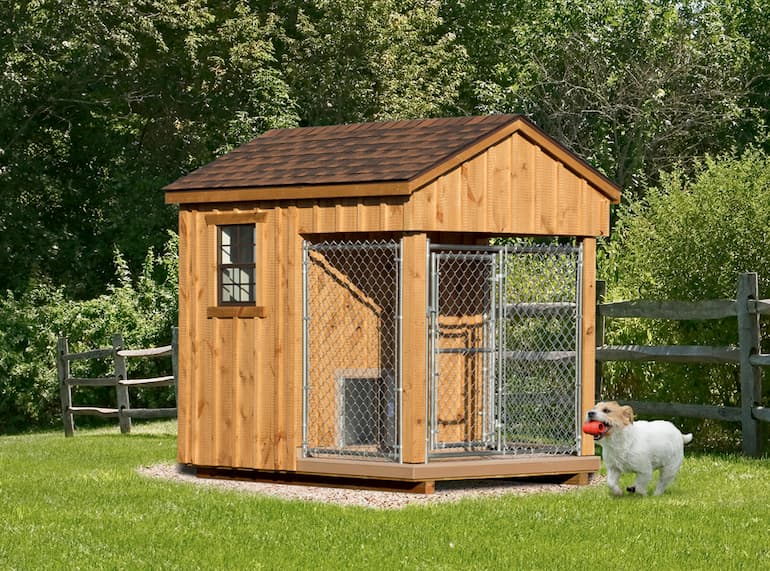As a pet owner, your main goal should be protecting your dog and keeping him safe. From providing delicious food and treats to choosing trendy beds and toys, we do everything we can to make the lives of our furry best friends as comfortable as possible.
When your dog is not inside the house with you, you might want to provide him with a safe, comfortable, enjoyable place when he can’t enjoy your full backyard. An enclosed dog run is an ideal solution to protect your pet and might be especially useful if your yard doesn’t have a fence. Even if you have a well-fenced backyard where your pets can run, play and explore, dog run enclosures are so beneficial that every dog parent needs one for their loyal companion.
Benefits of a Dog Run
There’re many reasons why you may need to invest in an outdoor kennel. Some owners leave their dogs to live outside. Or, if you work and there is no one at home during the day, you may need to find a place for your pet to stay. Leaving your dog inside while you’re away may result in a few broken vases, ripped curtains and a messy room. You can leave him outside if you have a decent-sized yard with fences to ensure that he can’t escape. However, he will still need some shelter from the elements.

We all know that dogs tend to get anxious or bored when confined in a small space. Dog run enclosures are designed with the idea to provide enough room for your pet to run and play inside them. A sturdy and good-quality enclosed dog run can provide your pet with his own safe space where he can rest, play or sleep. A dog run enclosure is the best way to keep your dog away from the plants in your garden since some of them may be toxic for him.
A great benefit of enclosed dog runs is that there’s plenty of room to leave essentials such as water, food, bedding and toys, so your loyal companion is comfortable all the time. Besides safety and comfort, the dog run kennel can be used to house-train your furry pal. Another benefit of dog kennels is that they are very affordable and easily accessible. It’s easy to find outdoor dog kennel run kits that you can assemble by yourself, which are usually much more affordable than custom-made designs.

What to Consider When Buying One
The first thing you need to consider when you’re looking for enclosed dog runs for sale is the size. Most pet store shops have experienced staff that can help you find what you need and choose the best product. Generally, larger breeds need larger dog runs, while small breeds might be happy with an indoor kennel.
The smartest choice may be to opt for a versatile modular dog kennel kit that offers you the flexibility to add or remove panels and change its size and shape. Some kits also allow you to add additional doors and divide the panels to turn it into a multi-compartment kennel in the future. For example, panels that are180 cm tall, 100 cm wide and approximately 3 cm thick might be ideal for installing a comfortable outdoor kennel. Usually, panels come with two sets of mounting brackets and bolts, making assembly a piece of cake. If you intend to use the kennel for little puppies, a raised door opening (25 cm tall) might be a smart choice to prevent them from rushing out.
Another important feature you need to consider when buying an enclosed dog run is the material. Dog runs made of steel tubes with hot-dip galvanised surfaces might be a very sturdy and durable solution. You may also want them to be powder-coated to provide extra rust protection. Aluminium and stainless steel are also good choices for dog kennel materials, while plastic models are not recommended. Don’t forget that the dog run you choose will be exposed to the elements, so you might want to choose a good quality material that is going to last for years.

How Do I Get My Dog to Use a Dog Run?
Dogs can sense that going into the kennel means the end of your attention and all the fun. If you make the new shelter more appealing, your dog might get used to it sooner. You can start by turning the kennel into a comfy den area. You can put a comfy and cosy bed inside, some of his favourite toys and leave water and food for him. Experts advise letting to your dog exercise for about 20 minutes before you leave, such as going for a walk or fetching. This way, your dog might be less restless and more likely to settle down once he is in his kennel.
Using positive reinforcement is always a good idea. Giving your dog a reward for good behaviour might help get him in the kennel sooner. You can try standing next to the run with your dog on a leash. Throw a couple of treats, one near the entrance and one further back in the kennel. Every time he enters the kennel, let him out immediately. Repeat this process multiple times until he learns to go inside willingly.
